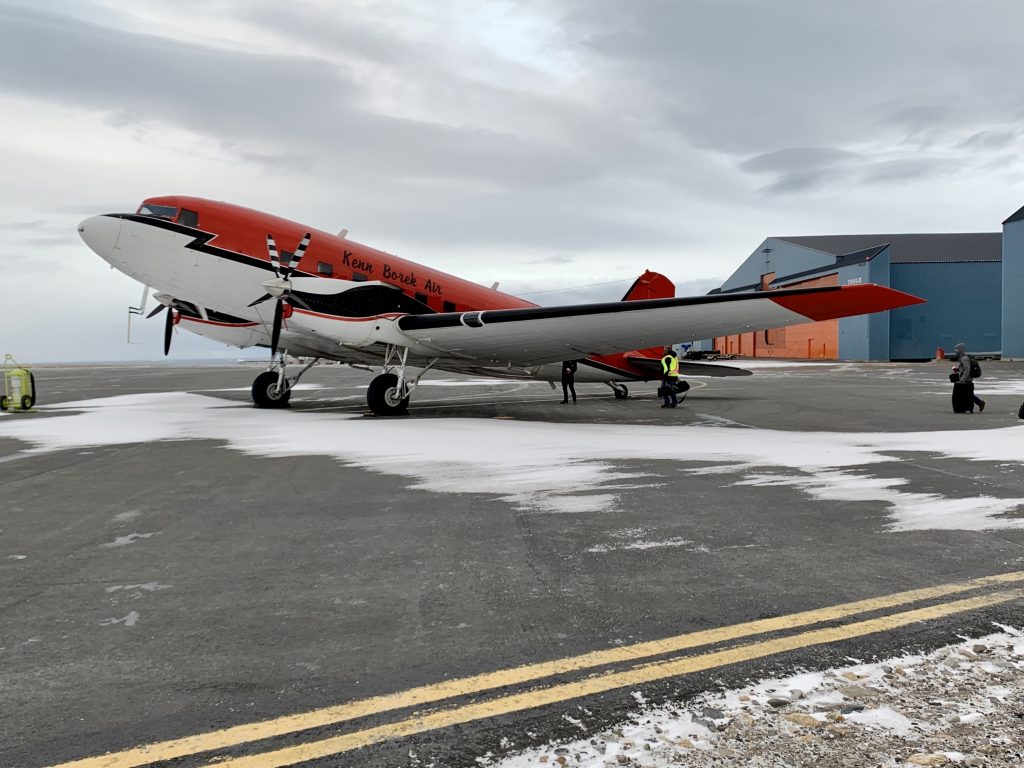
By Lara Streiff
Despite racing against impending harsh weather conditions, a red and white World War II aircraft flew slowly and steadily over the icy waters surrounding Greenland in August and September. Three weeks delayed by pandemic restrictions, scientists from NASA’s Jet Propulsion Laboratory inside this retrofitted DC-3 plane started dropping hundreds of probes as part of an annual expedition known as the Oceans Melting Greenland (OMG) Project.
Since 2016, the OMG project has conducted numerous flights over the waters near Greenland’s lengthy and jagged coastline. They drop roughly 250 probes each year (though they managed a record 346 during this extraordinary 2020 expedition) which then relay temperature and salinity data. The team uses this information to help determine how much the surrounding ocean is contributing to Greenland’s ice melt.
“The glaciers are reacting very strongly to the ocean and we ignore that at our peril,” said JPL scientist and principal investigator Josh Willis. “The oceans have the potential to melt the ice very quickly and drive the sea level rise even higher than we expected.”
If it all melted, Greenland’s ice could contribute as much as 25 feet of sea level rise—though Willis assures us that this is not expected within the next year, or even the next 100 years. The big question that his team is trying to help answer is rather the speed at which the ice is melting.
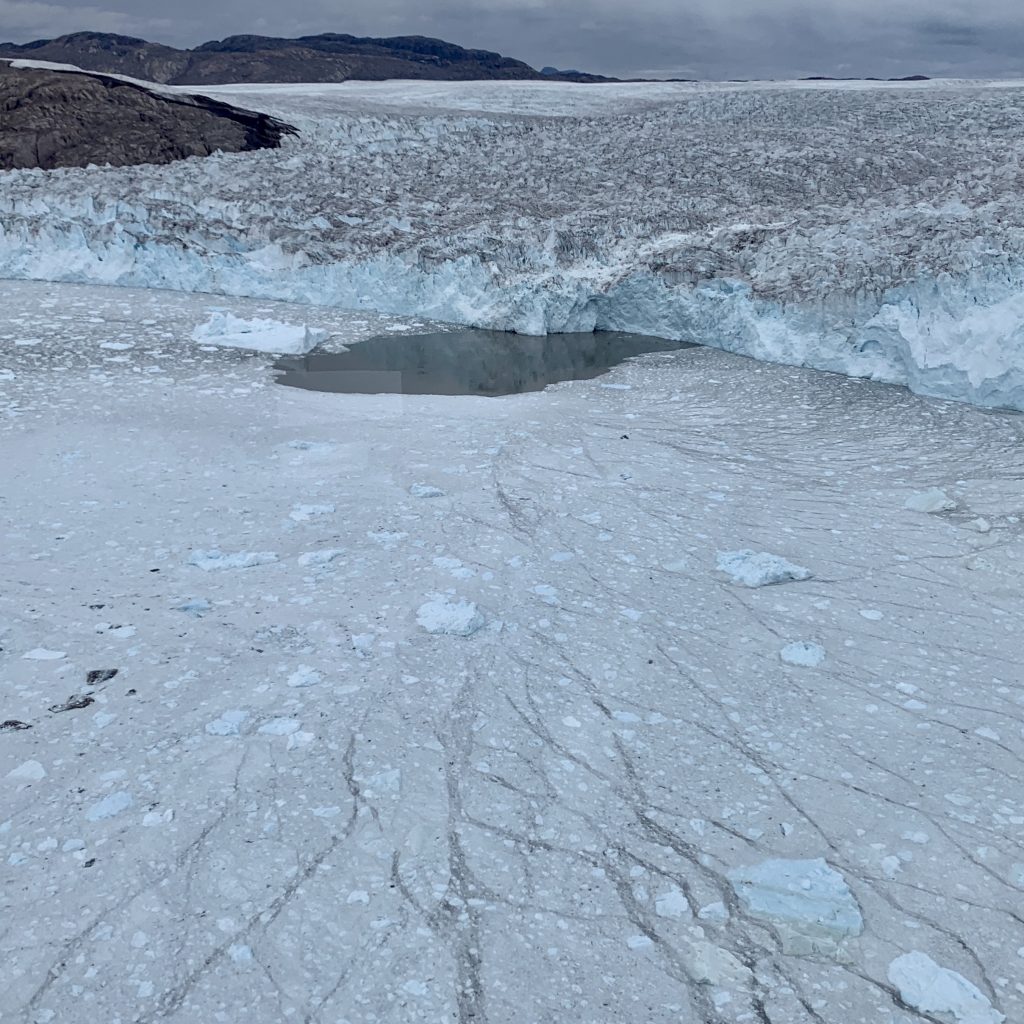
Unlike icebergs—which float in water—glaciers sit atop a land mass, seemingly exposed and vulnerable to the warming atmosphere. While the atmosphere is a significant factor, it is not solely responsible for glacial melt. As the glaciers in Greenland start to ooze off the island in massive rivers of ice, they carve fjords into the landscape until they finally connect with the sea. While surface waters are generally frigid, the warmer ocean waters from below can cause the glacier to melt more quickly and speed up the amount of ice that drains off the land into the ocean.
Though the coronavirus pandemic had sweeping impacts across the globe, it didn’t halt environmental processes like Greenland’s glacial ice melt. It also didn’t impede the resolve of the OMG scientists to continue their work.
Starting in March up until the day they landed in Greenland on August 24, Willis says he wasn’t sure they would be able to collect their data this year. But cooperation between the various stakeholders, including NASA, the State Department, and the governments of Canada and Greenland, was key. Willis also gives credit to a huge amount of hard work by OMG’s Project Manager, Ian McCubbin of JPL, for making it possible. “If it wasn’t for McCubbin,” said Willis, “we’d still be sitting on our couches.”
Coordinating the scientists and equipment necessary for any expedition requires a great deal of planning, and the additional pandemic-related precautions made everything just a little bit more complicated.
“It was like a whole new layer, after you go across the border and go through customs and boarder control, now you also go through coronavirus screening,” Willis said.
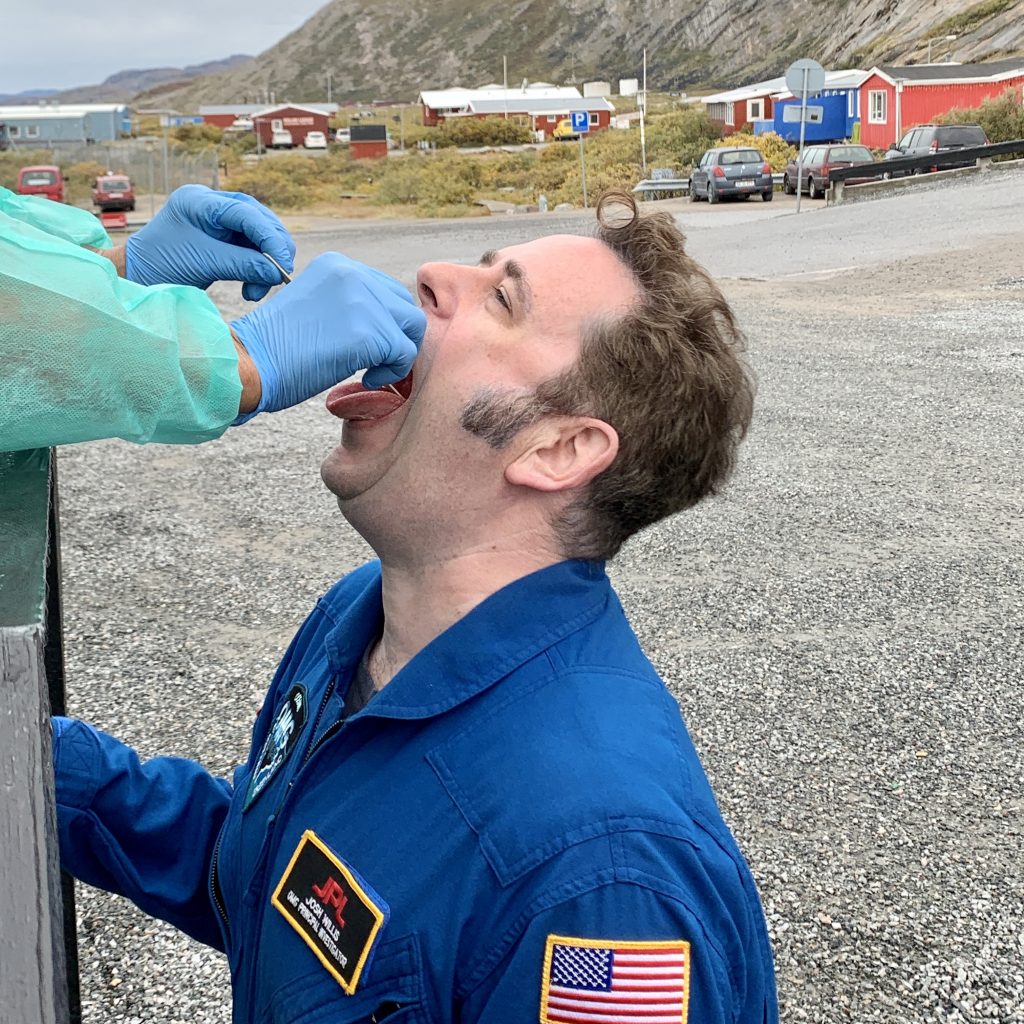
In addition to getting tested a whopping seven times, two of which took place before even stepping foot in Greenland, Willis and the other members of the OMG team were very cautious. There was an initial isolation period after landing on the island during which they could fortunately work on the plane and equipment preparation, wearing masks when traveling to and from the site and no contact with locals. Greenland has had very few cases of COVID, and doesn’t have enough hospitals to handle any outbreaks, so the team was especially conscious of limiting their interactions with people there.
One exception was communicating with the nurses conducting their COVID-19 tests. “It was quite an experience getting tested this many times,” said Willis, “but the most fun was actually with nurses in Greenland, who were very nice and asked about our mission, so we got to tell them about what OMG was doing—and I suspect they followed along the rest of our journey on social media.”
Though some legs of the scientists’ expedition were delayed or more challenging as a result, Willis says it was well worth the extra effort to ensure everyone’s safety.
The outcome turned out to be a banner year for the project, despite the late start. Instead of heading north at the beginning of the month, it was already well into August when Project Manager Ian McCubbin and the three scientists from JPL—Ian Fenty, Mike Wood, and Willis himself—were able to meet with their flight crew from Kenn Borek Air.
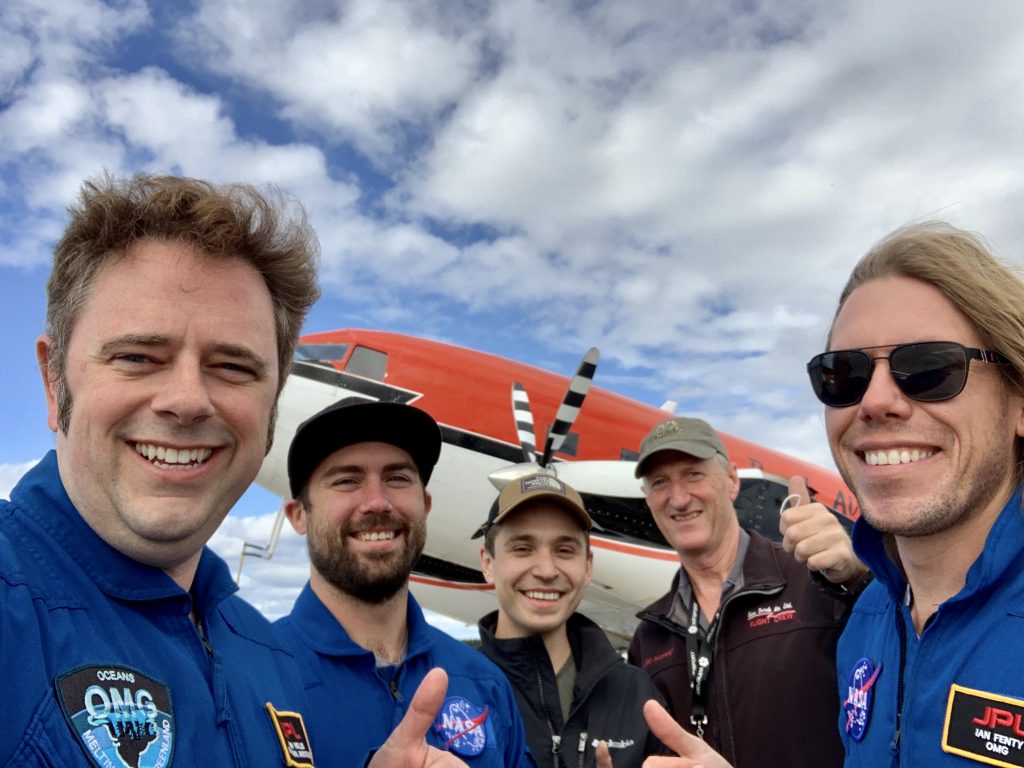
Once they were on the ground in Greenland, their main concern was for the conditions they might encounter once back in the air.
“Weather starts to get pretty rough in September, and very rough in October.” said Willis. Fortunately, they were able wrap up their surveys by mid-September, mostly dodging the snow, sleet and wind that might impede their ability to drop all of the probes. “It was a sprint to the finish line, but we were able to accomplish everything we wanted to do and more.”
In fact, the team encountered unusually good conditions in the north east parts of the island, where ice and fog usually prevent access. As a result, they measured some glaciers that had never been sampled before.
When the project first began in 2016, the scientists also flew a jet with a radar strapped on the bottom to measure big swaths of glaciers from above, but NASA’s ICESat-2, an Earth-observing satellite that measures the mass of ice sheets and glaciers down to the inch that launched in 2018, takes care of that part of the mission now.
More than 45 scientific papers have now been published based on OMG data, with several more in progress. Willis says that every new discovery reminds them that the oceans are more important than they ever thought possible.
This year they noted new observations of Greenland’s largest glacier Jakobshavn, which has been closely monitored since the start of the project in 2016. In the first couple of years, the water near Jakobshavn cooled by 2.7 degrees Fahrenheit (1.5 degrees C)—a whole lot for a block of ice according to Willis. That cooling slowed the melting of the glacier, which then started growing instead. But early this year warm water returned to Jakobshavn and the recent observations suggest it is now thinning once again.
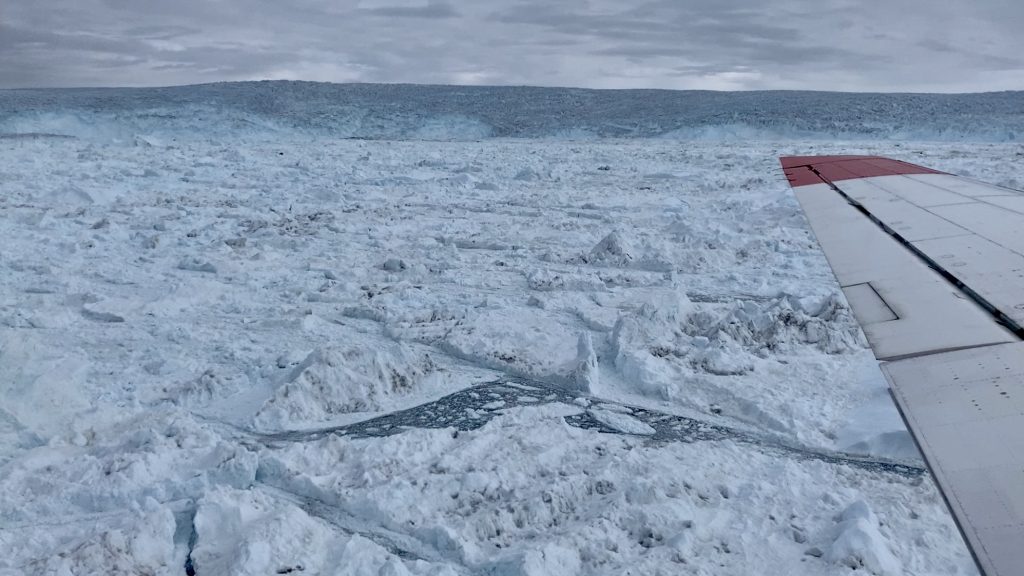
These continued discoveries from the project are very exciting for the scientists and organizations involved. Because of this, the OMG project has gotten approval to continue its research beyond the original end date, meaning that Willis and his crew will again be making their way back to Greenland next August, and this time hopefully without much delay.
